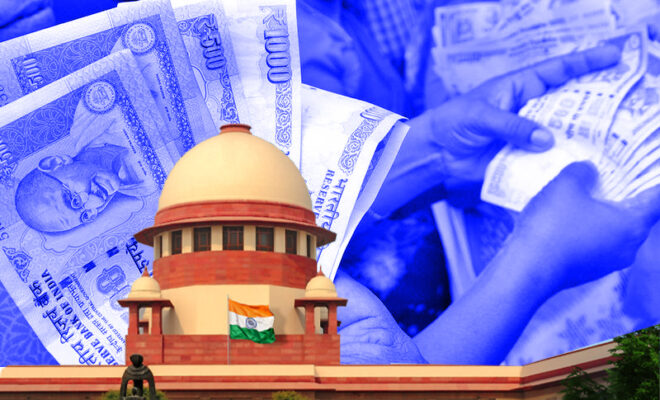Demonetization Policy Was Completely Valid: Supreme Court

A Supreme Court bench affirmed the Central government’s 2016 demonetisation policy that made ₹500 & ₹1,000 currency notes of denominations out of circulation.
The majority judgment was read by Justice BR Gavai on behalf of himself, SA Nazeer, AS Bopanna, and V Ramasubramanian. 4 out 5 judges affirmed the demonetization policy & central government’s decision. But one judge, BV Nagarathna, wrote a dissenting opinion.
Justice Gavai, who delivered the majority verdict, stated that the 2016 demonetisation decision was free from any legal or procedural errors and was not affected by the proportionality doctrine.
According to the judgment, the records presented to the court demonstrated that the Centre and the Reserve Bank of India (RBI) had adequate consultations before the decision was made.
Because the proposal came from the government and not the RBI as required by the RBI Act, it was stated that the action could not be deemed illegal.
The majority verdict endorsed the Centre’s November 8, 2016 notification and emphasized that judicial interference in economic policy matters is extremely limited and that “great restraint” is needed before interfering with any such policy decision.
The jury found the 52-day time limit for exchanging demonetised notes to be “reasonable.”
It cited an earlier decision from the 1980s that upheld the 1978 demonetisation decision with an eight-day window for exchanging banknotes.
Related Posts
According to Justice Gavai, it is more important that a policy decision is compliant with the law and that the objective it seeks to achieve is reasonable rather than whether it can achieve its goal or not.
The government was charged with violating citizens’ fundamental rights and acting in a manner that was against the law as established by the RBI Act of 1934 in the more than thirty petitions filed in opposition to the 2016 decision.
On October 12, a constitution bench requested affidavits from the Centre and the RBI outlining the reasoning behind the policy’s development.
On that particular day, the five-judge bench rejected the government’s request to end the prosecution by declaring them futile and academic exercises, stating that it was a “serious matter.”
The government described demonetization as “a major step to fight the threat of fake currency notes, collection of unaccounted wealth, and funding of subversive activities” in its affidavit submitted in November.
Demonetization, according to the government, was a “critical step in the series of impactful economic policy” that helped fight the threat of fake currency, terror financing, black money, and tax evasion while also encouraging significant portions of the informal economy to join the formal economy.
The government asserted that the decision to demonetize had several “perceptible benefits,” including the ability to detect fake currency and a sharp rise in digital payment activity and income tax conformance. It was noted as having a “transient” effect on India’s economic expansion.
In its affidavit, the RBI defended the action, arguing that since the decision was made in the “national economic interest,” the inconvenience to the people could not be used as a justification for contesting the legality of demonetisation.
According to the Center, the removal of the legal tender status was one of the key steps in the improved formalization of the economy, which aims to increase prospects for the millions of people who live on the fringes of the economy.
The central board of the RBI issued a particular recommendation for demonetisation and also provided a draft scheme for its implementation in compliance with the RBI Act, according to the government, concerning the method used to declare bank notes of the denominations of 500 and 1,000 invalid tender.
On December 7, the constitution bench heard arguments from both sides and reserved judgment on the collection of arguments.



